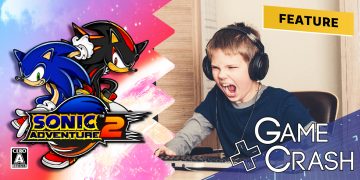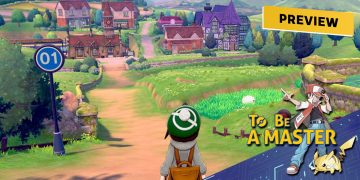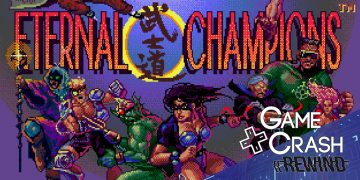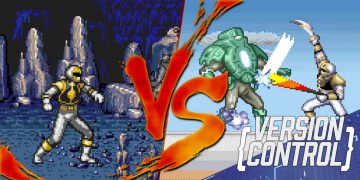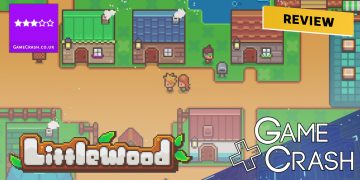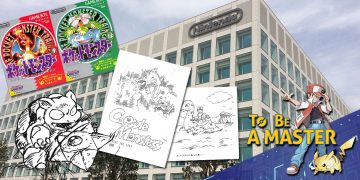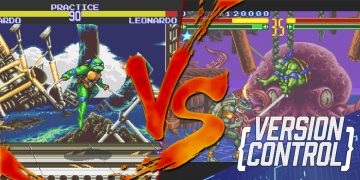The 15th August sees one of the most anticipated gaming releases of the year in Sonic Mania. Unlike most of this year’s biggest games, though, the humble roots of Sonic Mania make for a surprising success story for a community of Sonic fans. This is the story of how a group of young, creative, fans came to live the dream of making a new Sonic game.
Sonic’s Band
While Sonic Mania’s development is being overseen by Sonic Team, the day-to-day development has all been completed by a small group of indie developers. What’s most unusual about Sonic Mania’s development, though, is that so many of the people working on the game have spent years making Sonic fan-games, fan-art and music remixes. It’s a common part of many online communities, especially those centred around video games.
But, no-one in the industry has embraced this community more than SEGA, and that direct and friendly relationship with their fans would seem to have led to an overall renaissance of the Sonic brand itself. Something that’s apparent in the success of the official Sonic Twitter account run by Aaron Webber, a long-time Sonic fan who worked his way into leading the Sonic PR team from humble roots as a moderator for a Phantasy Star Online forum.
In Sonic Mania’s case, the game simply wouldn’t exist without the strong community that built up around making Sonic fan games. In the earliest days of this community, the tools available were crude (and often pirated) drag and drop game making software such as ClickTeam’s Klik ‘n’ Play and The Game Factory. No coding was involved, but creative minds were capable of using the event-based scripting to surprising effect. Many websites became dedicated resources of assets, tips and even pre-built game ‘engines’ using this event-based scripting that were designed to as closely replicate the physics of the Mega Drive Sonic games as possible within the limits of the software. One of these websites, Sonic Fan Games HQ, can be credited with a lot of the success of this community through its influence throughout the years.
SFGHQ’s Boom: Rise of SAGE
The website, most commonly known as SFGHQ, started off as a typically basic early-Internet fan site. In this case, though, it was dedicated to the collection of Sonic Fan Games and distributing the assets and knowledge for others to make them – specifically using the easily available The Games Factory. From 2006, though, it became best known for something greater: SAGE.
The Sonic Amateur Games Expo, or SAGE, had been running since 2000. Originally founded by community member Ryan Bloom AKA ‘BlazeHedgehog’, SAGE was intended as a showcase for fan games in order to ‘soften’ the view of publishers towards fan games and portray them as something more than simple trademark infringement. Rather than a real world convention like its inspiration, E3, the event centred around showcasing content on the SAGE website and an IRC chatroom. Fan game creators would submit images, videos and even demos of their games to feature on the website. Meanwhile, they and many others in the community would join the festivities going on in the chatroom to discuss the games on show.
In 2006, SFGHQ took over hosting the event, and has continued to be the home of SAGE ever since. Once originally taking place twice a year, albeit with some gaps, SAGE now takes place once a year, typically during summer. The SFGHQ website itself is now dedicated to the annual SAGE event. The content on the website is even blanked between events to create a sense of truly being a live experience.
SEGA and SAGE’s relationship
In the years after SFGHQ took over hosting the event, SEGA started taking an interest in the community. For most other fan game developers, this would be the point at which the story would end with a cease and desist letter. Crucially though, SEGA opened their arms, embracing SAGE and the fans involved with it. Guest contributions and interviews from those previously as well as currently involved with the Sonic franchise started to become a recurring feature of the event. Ranging from Sonic X-Treme designer, Chris Senn as well as classic Sonic music composers Howard Drossin, Richard Jacques and Jun Senoue to the voice artists Ryan Drummond (Sonic) and Mike Pollock (Dr. Eggman).
While social media has made interacting with the people behind the scenes of making our favourite video games easier and much more common these days, SEGA’s embrace of the fan game making community remains a markedly different approach than any other major publisher. Particularly compared to their classic rival, Nintendo.
Retro beginnings
In 2007, SAGE featured a demo for a game called Retro Sonic. The game had been in open development since at least 2001. Development started out as an endeavour by Christian Whitehead – known as ‘The Taxman’ – to use Clickteam’s tools to make an authentic recreation of the classic Sonic game engine. However, these versions suffered from hitting the limits of what was possible with Clickteam’s basic software. By 2007’s demo the game was now running on its own proprietary Retro Engine developed in C++ and, free of those limitations, was much closer to matching the gameplay of the classic Mega Drive games.
Retro Sonic itself never became a completed fan game. Instead, Whitehead’s work was merged with another promising fan game that had also hit the limitations of ClickTeam’s software, Sonic XG. The true lasting legacy of Retro Sonic, however, is the Retro Engine and the ‘Retro Software Development Kit’ (RSDK) that was developed for games, such as Sonic XG, to work with it.
The Retro Engine’s ability to perfectly capture the classic Sonic gameplay, while also running at a smooth 60FPS, in widescreen, not only stood apart from the ROM hacks (edits of the original game’s code) that were increasingly making up the majority of the high-end of Sonic fan game releases but also opened the doors to much wider opportunities.
Controlling Chaos – Sonic CD
After the release of the iPhone, a new battleground for gaming was emerging and from the beginning indie developers were the ones leading the way. With a game engine that was compatible enough to run on the iPhone with minimal adjustment, Whitehead began working on his first iOS fan game – a remake of Sonic CD.
Coincidentally, SEGA were also investigating this new platform at the time. In 2009, they asked for fans to suggest what games they should bring to the iPhone and iPod Touch. Whitehead responded to their call by releasing a demonstration of his version of Sonic CD already running on an iPhone.
https://www.youtube.com/watch?v=EJa-4tMqVNc
The original release of Sonic CD had always been a complicated one for SEGA to bring to other platforms. The Mega CD was not as easy to emulate as the Mega Drive and music differences between the original releases worldwide would either require disappointing fans of a particular version of the soundtrack or altering the game’s ROM to offer options. It’s perhaps for these reasons that SEGA accepted Whitehead’s pitch for an entirely remade version of the game over trying to emulate the original.
Whitehead was hired to continue work on his version of Sonic CD and it was released on iOS and Android in 2011. The Retro Engine’s cross-platform friendliness also allowed for releases on the Xbox 360 and Playstation 3 – with a Steam release following within months. The game was incredibly well received on all platforms, and quickly became the definitive version of the game among even long-standing fans. Both the American and Japanese soundtracks were included, while Tails was added as an unlockable playable character. But, aside from a few other minor tweaks as well as remastered cutscenes, the game was a faithfully accurate recreation of the Mega CD original.
Living and Learning – The Birth of Sonic Mania
Headcannon Games
In order to develop his pitch demo for Sonic CD, Whitehead had approached another community member, Simon Thomley – known as Stealth – for help. Much like Whitehead’s trajectory through the fan game community, Thomley had also developed his own proprietary engine for Sonic fan game development.
Unlike Whitehead, however, Thomley also had a background in ROM hacking. He is credited with the first hack to include Knuckles in Sonic 1 – a feature Sonic Team themselves were unable to achieve with Sonic & Knuckles’ infamous lock-on technology. He also contributed to possibly the most successful and well known Sonic ROM hack: Sonic MegaMix. An in-depth reworking of the original Sonic the Hedgehog with additional levels and playable characters.
Thomley contributed to Whitehead’s pitch for Sonic CD by providing information and pseudo-code developed from reverse-engineering the original game, so that Whitehead’s version could be as perfectly accurate as possible. Although he did not work on the project itself once officially picked up, when SEGA decided to continue working with Whitehead for versions of the first two original Mega Drive Sonic games he was brought on board officially. This time acting professionally as the newly formed Headcannon Games.
The new Sonic team
Whitehead and Thomley kicked off their partnership with development of a new version of the original Sonic the Hedgehog. As with Sonic CD, although they’d introduced some bonus features – such as being able to play as Tails or Knuckles, cheat codes that enabled Sonic 3’s elemental shields or the ability to turn into Super Sonic – the game was otherwise faithful to previous releases developed by SEGA.
However, in developing their version of Sonic 2, Whitehead and Thomley began to get a bit more ambitious in taking advantage of the fact that they were remaking the games, rather than simply porting them. Whilst there are similar bonuses and unlockables to their previous games, this version of Sonic 2 also included two new levels.
The lost levels
The Hidden Palace zone was an infamous ‘lost level’ of the original game. It had been openly teased during development, and was somewhat playable in prototype builds of the game that have since been unearthed, but was ultimately cut from the final game. Whitehead and Thomley took existing assets from those older builds and developed their own version of the level, making the level officially playable for the first time in over 20 years.
The Egg Gauntlet Zone was developed as a boss attack run – set in a full level featuring platforming, rings and enemies – and was an entirely original addition to the game. However, in this instance, Sonic Team disapproved of the game’s bosses being removed from their usual environments and the level was dropped in favour of the more basic boss run found in the final release.
Throughout these three games the seeds of Sonic Mania were being planted. It was one thing to faithfully recreate existing content, but there was a huge desire not only from Whitehead and Thomley, but from the fans, for something new as well. The concept of combining old levels with new mechanics and new levels rooted in classic gameplay is not only the door these remakes were increasingly knocking upon, but the very core of Sonic Mania itself.
Sonic’s Heroes
In early 2016, Whitehead and Thomley approached Takashi Iizuka, the head of Sonic Team to pitch a new game that built upon the success of the three previous releases. Originally titled Sonic Discovery, the game would be an effective continuation of the original Mega Drive Quadrilogy. As with Whitehead’s Sonic CD pitch, they didn’t arrive empty handed. The pair had already developed the brand new Studiopolis Zone to convince Iizuka-san of their capabilities in creating brand new content.
Announced as Sonic Mania during a 25th Anniversary celebration held at San Diego Comic Con that year, the response from the assembled crowd was intensely positive. Perhaps the most impressive thing about the response, though, was that it was kicked off simply by the reveal of Whitehead and Thomley’s involvement. This was the true beginning of a brand new Sonic team. One that the fans themselves were entirely behind.
Sonic’s Fans Unleashed
In developing their version of Sonic 2, Whitehead and Thomley brought in some help from experts on the subject matter: Tom Fry and Jared Kasl. The pair had met and collaborated on a fan-game remake of Sonic 2, known as Sonic 2 HD. While the project ultimately never took off during their time on it, they took what they’d learned in working on the game and struck out on their own to continue developing games – forming Pagoda West.
With SEGA signing off on Sonic Mania, Pagoda West was the obvious choice for a team to handle the full development duties. Kasl took on the role of level designer for Mania, while Fry assumed the role of Lead Artist. Another collaborator on Sonic 2 HD and already well-known remixer of Sonic tunes, Tee Lopes, joined them at Pagoda West to compose the music for the game.
The involvement of the Sonic fan community in the development of the game doesn’t end there, however. The remaining credits for Sonic Mania’s development include:
Falk Au Yeong – Mixing
A well-known Sonic remixer who also previously had contributed original music to a fan game called Sonic Before the Sequel.
Brad Flick – Designer
A game designer and sound engineer who had previously worked alongside Whitehead on the fan game Sonic Nexus as well as writing for fan sites such as Sonic Retro and Sonic Stadium.
Hunter Bridges – Project Manager & Programmer
A programmer and composer who had also previously worked on Sonic Nexus.
Kieran Gates – Artist
A UK based illustrator and graphic designer who had previously been involved with the UK fan-led convention, Summer of Sonic. Gates is credited with creating all the 3D models in the game, including those used in the special stages.
Hyper Potions – Cinematic Soundtrack
The collaborative name for electronic music composers Ian Tsuchiura and Kevin Villecco who have, alongside their own original music, remixed tracks from Sonic and other video games. The pair are credited with the music used in all the Mania trailers.
Taryn Costello – Designer
Developer at Pagoda West, working with Kasl on the level design.
Michael Balm – Designer
Co-founder of indie developer Picomy collaborating with Pagoda West for level design.
Paul Veer – Artist
Pixel artist who started out their career by editing sprites from the original Sonic games and has contributed commissioned art for previous Sonic projects and prints.
Lucas ‘Midio’ Carvalho – Artist
Pixel artist from Brazil. Has contributed to several other indie titles such as
River City Ransom and assisted with some of
Sonic Mania’s level designs.
Jameson Sutton – Sound Design
Video game music remixer and chiptune artist who was particularly inspired by Sonic and other SEGA games from his childhood.
Tyson Hesse – Cinematic Animation
Fan artist turned Pro. Hesse is best known for his recent work on the Archie Sonic comic series based on the classic Sonic games.
Every pixel, every note of music, and every action in Sonic Mania is touched by long standing, creative fans of the series in a way that no other major game ever has been. Sonic Mania isn’t just a celebration of the classic Sonic games, it’s also a celebration of all of the fans that have been working for years to continue the legacy those games left on the world.






